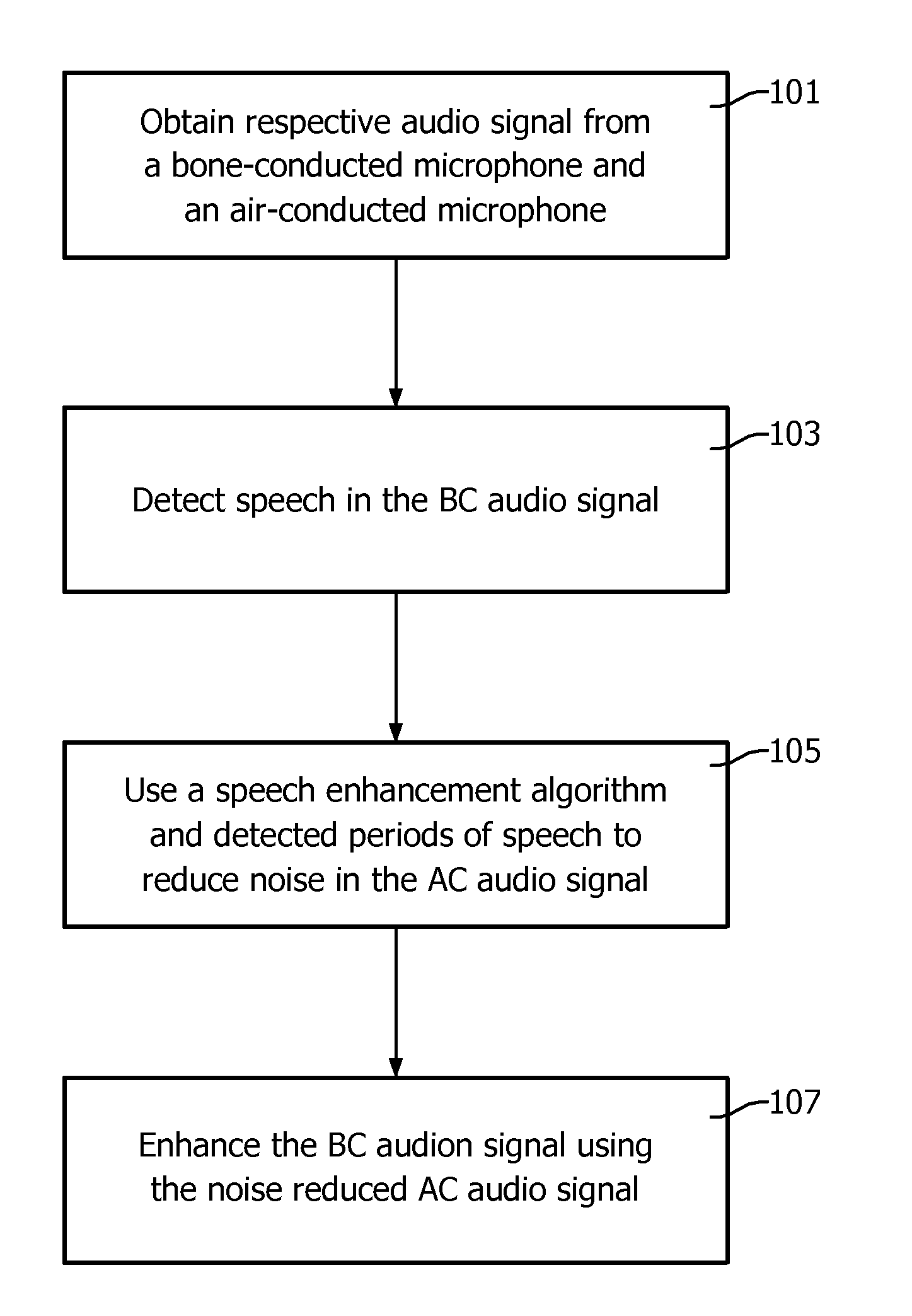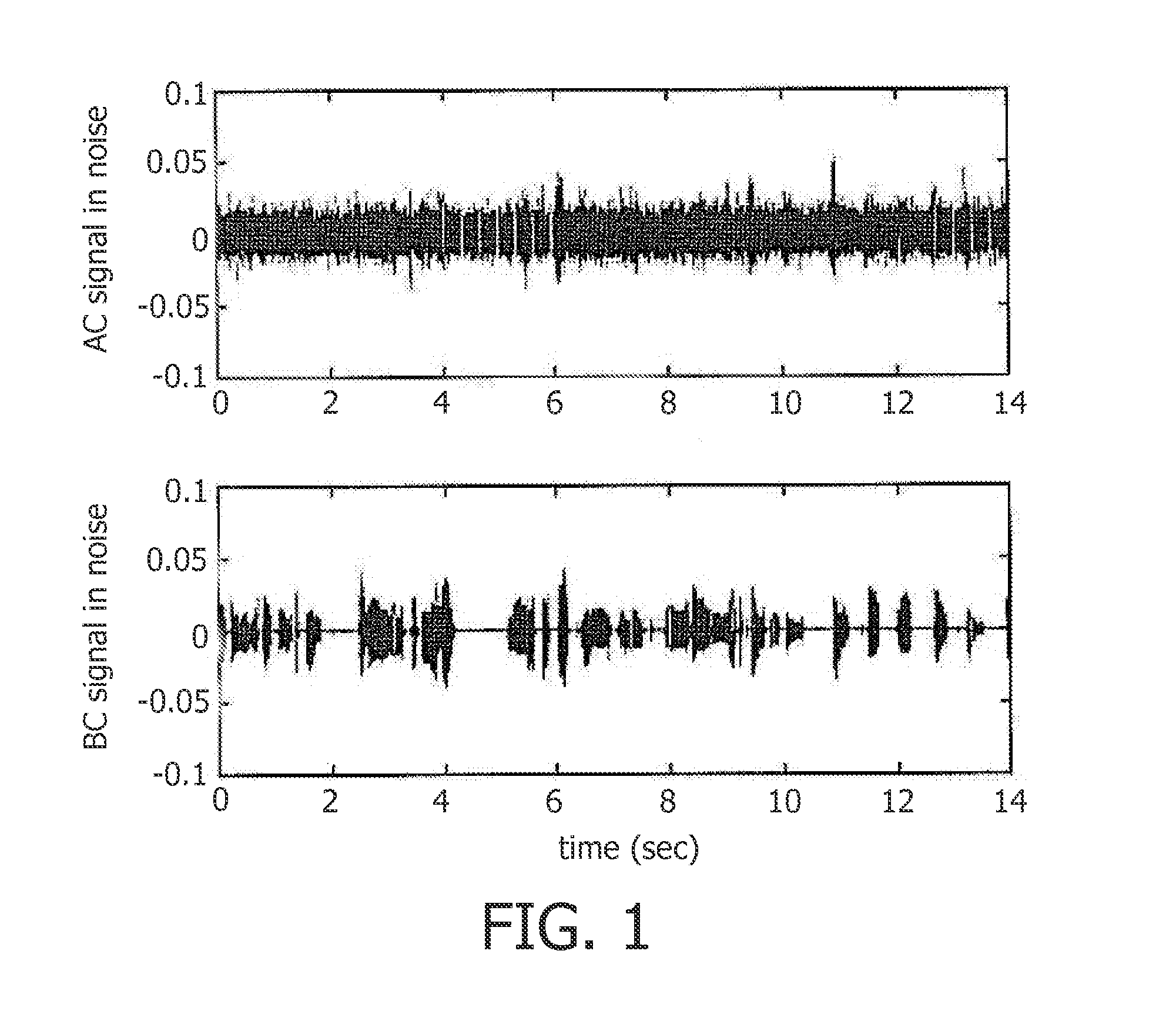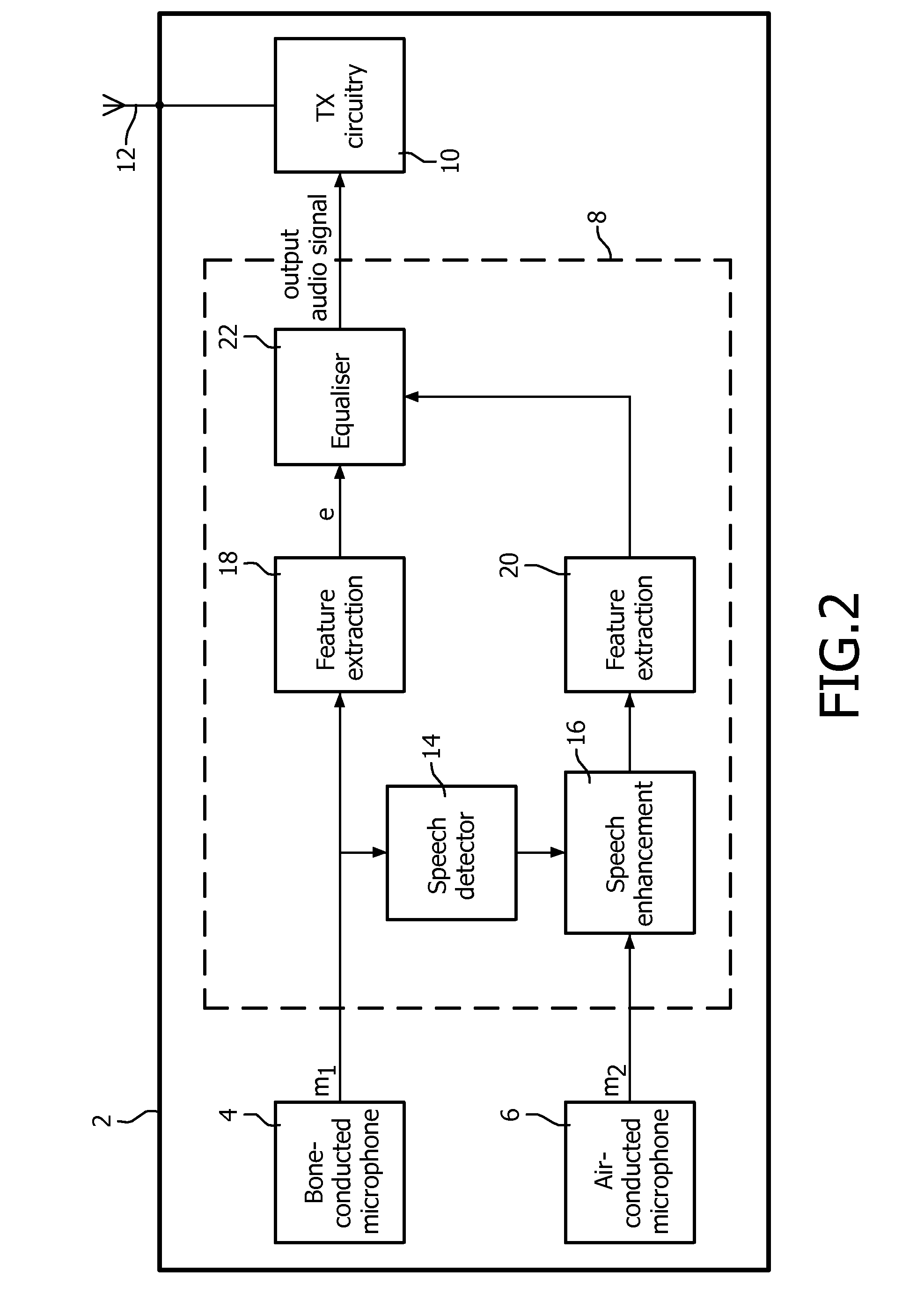System and method for producing an audio signal
- Summary
- Abstract
- Description
- Claims
- Application Information
AI Technical Summary
Benefits of technology
Problems solved by technology
Method used
Image
Examples
first embodiment
[0041]A device 2 including processing circuitry according to the invention is shown in FIG. 1. The device 2 may be a portable or mobile device, for example a mobile telephone, smart phone or PDA, or an accessory for such a mobile device, for example a wireless or wired hands-free headset.
[0042]The device 2 comprises two sensors 4, 6 for producing respective audio signals representing the speech of a user. The first sensor 4 is a bone-conducted or contact sensor that is positioned in the device 2 such that it is in contact with a part of the user of the device 2 when the device 2 is in use, and the second sensor 6 is an air-conducted sensor that is generally not in direct physical contact with the user. In the illustrated embodiments, the first sensor 4 is a bone-conducted or contact microphone and the second sensor is an air-conducted microphone. In alternative embodiments, the first sensor 4 can be an accelerometer that produces an electrical signal that represents the acceleration...
second embodiment
[0076]In the second embodiment, a second speech enhancement block 24 is provided for enhancing (reducing the noise in) the BC audio signal provided by the BC microphone 4 prior to performing linear prediction. As with the first speech enhancement block 16, the second speech enhancement block 24 receives the output of the speech detection block 14. The second speech enhancement block 24 is used to apply moderate speech enhancement to the BC audio signal to remove any noise that may leak into the microphone signal. Although the algorithms executed by the first and second speech enhancement blocks 16, 24 can be the same, the actual amount of noise suppression / speech enhancement applied will be different for the AC and BC audio signals.
[0077]A device 2 comprising processing circuitry 8 according to a third embodiment of the invention is shown in FIG. 9. The device 2 and processing circuitry 8 generally corresponds to that found in the first embodiment of the invention, with features tha...
third embodiment
[0098]FIG. 13 shows a device 2 in the form of a wired hands-free kit that can be connected to a mobile telephone to provide hands-free functionality. The device 2 comprises an earpiece (not shown) and a microphone portion 30 comprising two microphones 4, 6 that, in use, is placed proximate to the mouth or neck of the user. The microphone portion is configured so that either of the two microphones 4, 6 can be in contact with the neck of the user, which means that the processing circuitry 8 described above that includes the discriminator block 26 would be particularly useful in this device2.
[0099]FIG. 14 shows a device 2 in the form of a pendant that is worn around the neck of a user. Such a pendant might be used in a mobile personal emergency response system (MPERS) device that allows a user to communicate with a care provider or emergency service.
[0100]The two microphones 4, 6 in the pendant 2 are arranged so that the pendant is rotation-invariant (i.e. they are on opposite faces of...
PUM
 Login to View More
Login to View More Abstract
Description
Claims
Application Information
 Login to View More
Login to View More - R&D
- Intellectual Property
- Life Sciences
- Materials
- Tech Scout
- Unparalleled Data Quality
- Higher Quality Content
- 60% Fewer Hallucinations
Browse by: Latest US Patents, China's latest patents, Technical Efficacy Thesaurus, Application Domain, Technology Topic, Popular Technical Reports.
© 2025 PatSnap. All rights reserved.Legal|Privacy policy|Modern Slavery Act Transparency Statement|Sitemap|About US| Contact US: help@patsnap.com



